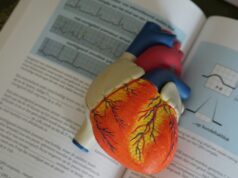 Smartwatches can help physicians detect and diagnose irregular heart rhythms in children, research published online in Communications Medicine has shown.
Smartwatches can help physicians detect and diagnose irregular heart rhythms in children, research published online in Communications Medicine has shown.
The finding comes from a survey of electronic medical records for paediatric cardiology patients receiving care at Stanford Medicine Children’s Health, conducted by Aydin Zahedivash (Stanford University, Palo Alto, USA).
Researchers report that over a four-year period, patients’ medical records mentioned “Apple Watch” 145 times, among whom 41 had abnormal heart rhythms confirmed by traditional diagnostic methods. Of these, 29 children had their arrhythmias diagnosed for the first time.
“I was surprised by how often our standard monitoring didn’t pick up arrhythmias and the watch did,” said senior study author Scott Ceresnak (Stanford University, Palo Alto, USA). “It’s awesome to see that newer technology can really make a difference in how we’re able to care for patients.”
Most of the abnormal rhythms detected were not life-threatening, Ceresnak said. However, he added that the arrhythmias detected can cause distressing symptoms such as a racing heartbeat, dizziness and fainting.
Using smartwatches for measuring children’s heart rhythms is limited by the fact that existing smartwatch algorithms that detect heart problems have not been optimized for children. Children have faster heartbeats than adults and also tend to experience different types of abnormal rhythms than do adults who have cardiac arrhythmias.
The paper showed that the smartwatches appear to help detect arrhythmias in children, suggesting that it would be useful to design versions of the smartwatch algorithms based on real-world heart rhythm data from children.
Data from watches included alerts about patients’ heart rates and patient-initiated electrocardiograms (ECGs) from an app that uses the electrical sensors in the watch. When patients activate the app, the ECG function records the heart’s electrical signals; physicians can use this pattern of electrical pulses to diagnose different types of heart problems.
The Stanford Medicine research team plans to conduct a study to further assess the utility of the Apple Watch for detecting children’s heart problems. The study will measure whether, in children, heart rate and heart rhythm measurements from the watches match measurements from standard diagnostic devices.
The study is open only to children who are already cardiology patients at Stanford Medicine Children’s Health.
“The wearable market is exploding, and our kids are going to use them,” Ceresnak said. “We want to make sure the data we get from these devices is reliable and accurate for children. Down the road, we’d love to help develop pediatric-specific algorithms for monitoring heart rhythm.”
The study was conducted without external funding. Apple was not involved in the work. Apple’s Investigator Support Program has agreed to donate watches for the next phase of the research.
Apple’s Irregular Rhythm Notification and ECG app are cleared by the US Food and Drug Administration (FDA) for use by people 22 years of age or older. The high heart rate notification is available only to users 13 years of age or older.









